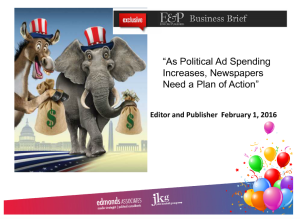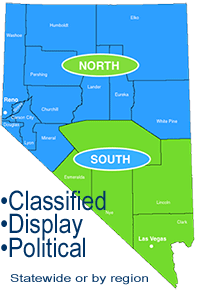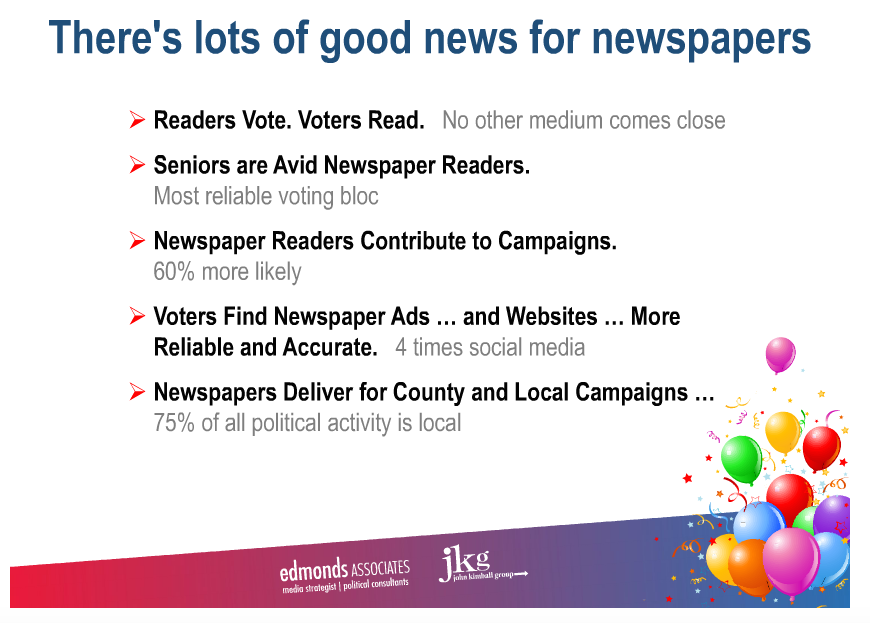Start early and simplify.
I listened to John Kimball, of The Kimball Group, describe the $11 billion in political advertising to be spent this year and his advice for how newspapers can grow their share.
While presidential politics is gathering all the ink right now, 75 percent of that money will be spent on state and local races.
Think about this: 45,000 to 50,000 people will be candidates for some kind of political office in this country. Have you contacted the ones running in your town?
 So that’s the first thing. Have a plan. And that involves compiling all the contact information on candidates, political action committees, advisers, etc., so you know who you’re talking to.
So that’s the first thing. Have a plan. And that involves compiling all the contact information on candidates, political action committees, advisers, etc., so you know who you’re talking to.
Kimball said everybody on the staff should be collecting information from mailers, TV ads, radio — everything political that has the ‘paid by …’ notice on it. If you’re seeing it, then they’re spending money.
Next, create easy-to-understand packages to present to the campaigns.
“It’s all about simplicity,” he said. Candidates understand what they’re getting in a 30-second TV spot. If you start throwing rate cards and Sunday positions and color combo buys at them, chances are you’ll lose them.
Small, medium and large
So he suggested putting together small, medium, large and premium packages. “Call ’em bronze, silver, gold and platinum, or whatever you want. Just show them quickly what they get.”
For example, a brochure displays exactly what comes in a $1,500 package. (One paper put them on thumb drives to leave after their sales presentations.)
Here are some highlights from Kimball’s webinar, which had 124 people from newspapers around the country:
When they say, ‘Your paper is already covering the race,’ respond: “That doesn’t mean the message getting out through the newsroom is the one the candidate wants. You need to promote your message.
 Readers overwhelmingly expect — and want — advertising in their newspapers, and they trust newspaper advertising more than any other source.
Readers overwhelmingly expect — and want — advertising in their newspapers, and they trust newspaper advertising more than any other source.
Sixty percent of newspaper readers are likely to contribute money to a campaign. That’s twice as likely as any other medium.
Last election, some ‘Get out the vote’ mailers — a heavily used means of reaching households on the eve of elections — actually showed up in mailboxes on Wednesday and Thursday after Election Day. “The Post Office doesn’t offer refunds,” he noted.
Make sure your package has a digital element. 9.5 percent of all digital spending will go to newspapers.
With added attention from the industry the last few elections, newspapers’ share of political advertising is rising faster than any other segment. It still is, however, only 10 percent of the $11 billion total.
“If we’re wildly successful, we’re only going to get 10 percent of the revenue. The irony is that we deliver 80 percent of the market.”
Here’s an example of the Hillary Clinton campaign taking over the Des Moines Register’s home page on the morning of the Iowa caucuses.
Here’s information on the Nevada Press Association’s political advertising network.
 Nevada Press Association The best in Nevada journalism since 1924
Nevada Press Association The best in Nevada journalism since 1924
